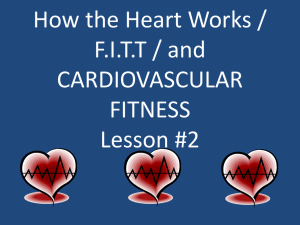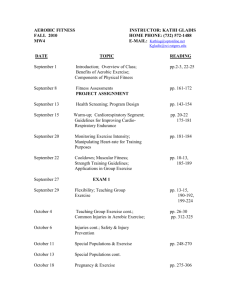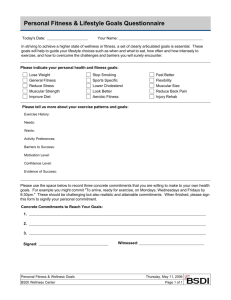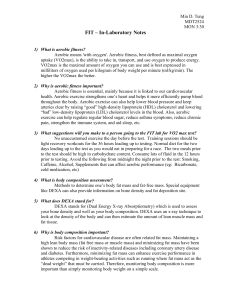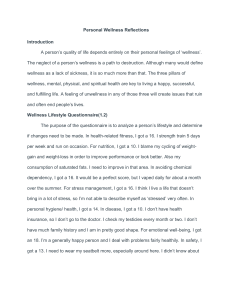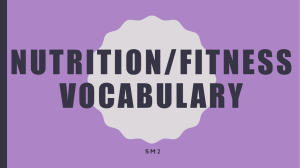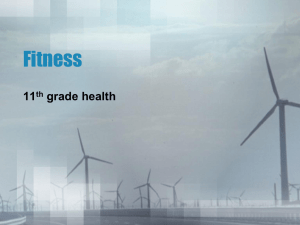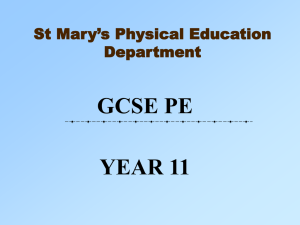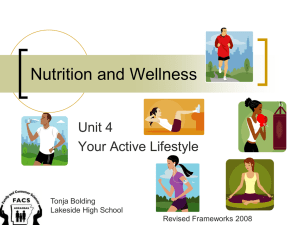Study Guide
advertisement
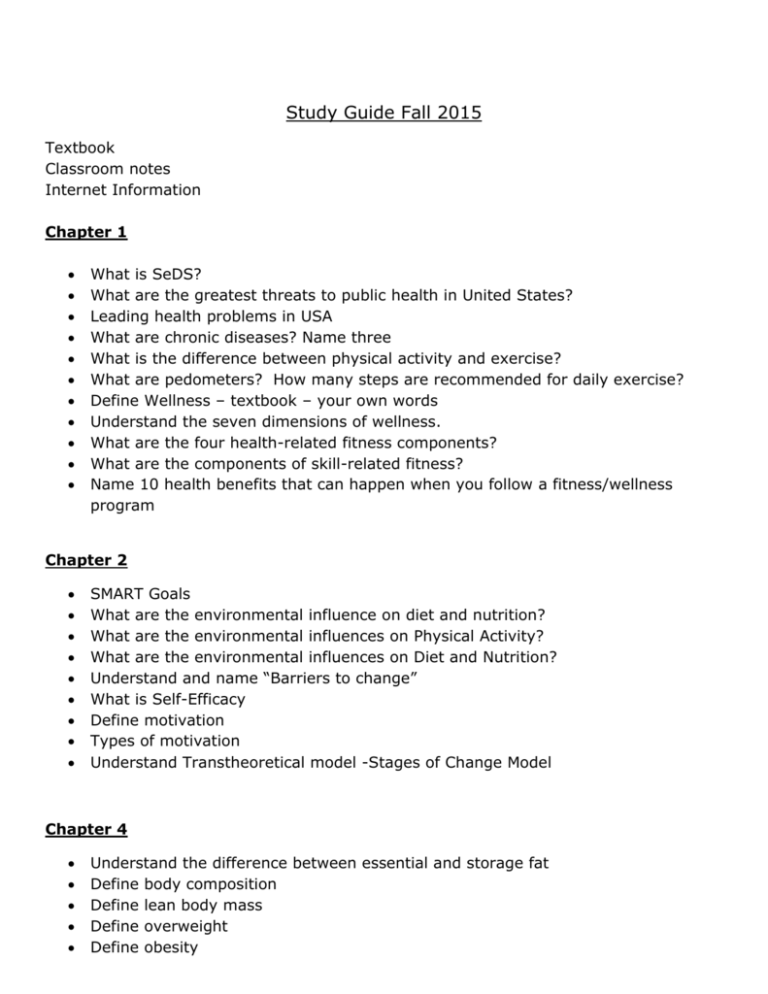
Study Guide Fall 2015 Textbook Classroom notes Internet Information Chapter 1 What is SeDS? What are the greatest threats to public health in United States? Leading health problems in USA What are chronic diseases? Name three What is the difference between physical activity and exercise? What are pedometers? How many steps are recommended for daily exercise? Define Wellness – textbook – your own words Understand the seven dimensions of wellness. What are the four health-related fitness components? What are the components of skill-related fitness? Name 10 health benefits that can happen when you follow a fitness/wellness program Chapter 2 SMART Goals What are the environmental influence on diet and nutrition? What are the environmental influences on Physical Activity? What are the environmental influences on Diet and Nutrition? Understand and name “Barriers to change” What is Self-Efficacy Define motivation Types of motivation Understand Transtheoretical model -Stages of Change Model Chapter 4 Understand the difference between essential and storage fat Define body composition Define lean body mass Define overweight Define obesity Hydrostatic weighing Skinfold thickness – anthropometric measurements Obesity BMI Waist measurements-what are they & the importance Classification Women (% fat) Men (% fat) Essential Fat 10-12% 2-4% Athletes 14-20% 6-13% Fitness 21-24% 14-17% Acceptable 25-31% 18-25% 32% plus 25% plus Obese Chapter 6 Define cardiovascular endurance What are Hypokinetic diseases? Name three What is ATP (Adenosine triphosphate- memorize this!) Name 10 benefits of Aerobic Training Understand the difference between aerobic and anaerobic Define and understand Maximal oxygen uptake (VO2 max) The difference between physical activity and exercise The difference between aerobic and anaerobic exercise – sports RPE Why do we asses’cardio fitness? Exercise heart rate and rate of Perceived Exertion (RPE) Define FITT & be able to write example Understand and define systolic blood pressure and diastolic blood pressure. Difference between warm-up and stretching Chapter 7 What are the three goals of weight training? Define muscular strength Define muscular endurance Define hypertrophy Compare and contrast the undesirable effects of anabolic steroids in men and women. 1 RM Learn the major muscles of the Human Body Describe the principles of specificity and overload work together in achieving greater strength. Why do women and children can’t build large muscles – They do not have “Circulating Androgens.” (yes, that is the answer) What are the factors that affect strength – Again, I am giving you the answer. Neural adaptation o Overcoming mental resistance o Recruiting a higher % of muscle fibers o Learning/efficiency – Muscle size - A larger muscle produces a stronger contraction Identify strength-training exercise safety guidelines. Identify advantages of using free weights and weight machines Chapter 8 Plastic and Elastic Elongation Which factors affect flexibility? PNF Stretching What is wrong with this statement: “Warm-up stretching” Diarthrodial Synarthrodial Amphiarthrodial ROM Differences between tendons and ligaments - examples When shouldn’t we stretch and when should we stretch. Why? Causes, prevention and rehabilitation of low back pain Describe two correct and two incorrect sleeping postures. Nutrition Reading labels – Nutrients Carbohydrates Protein Fat Making wise food selections * Reading labels – Understand the importance of reading labels and ingredients.
